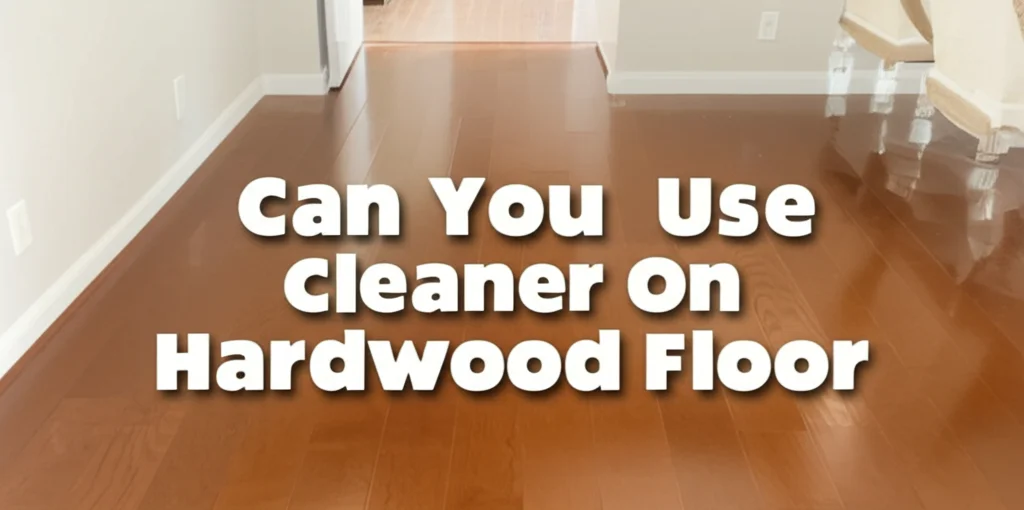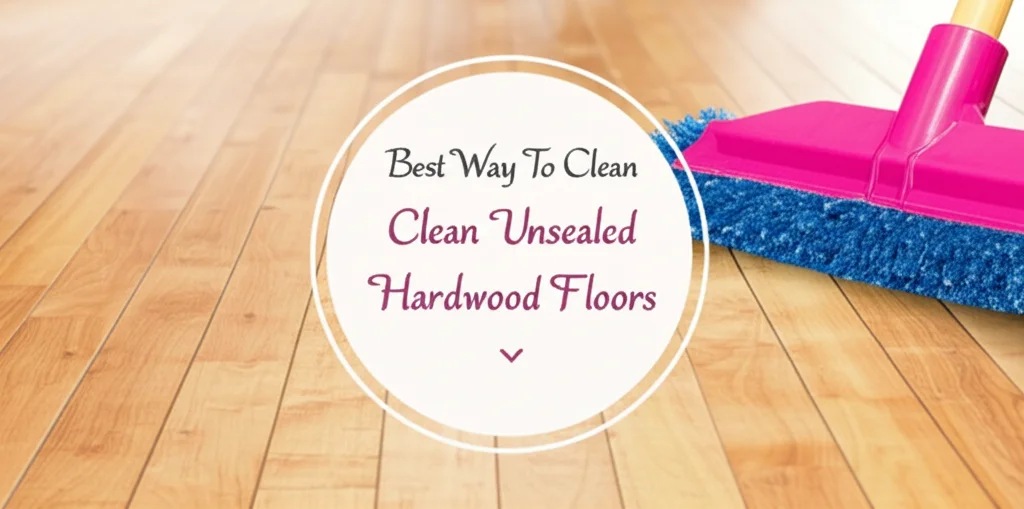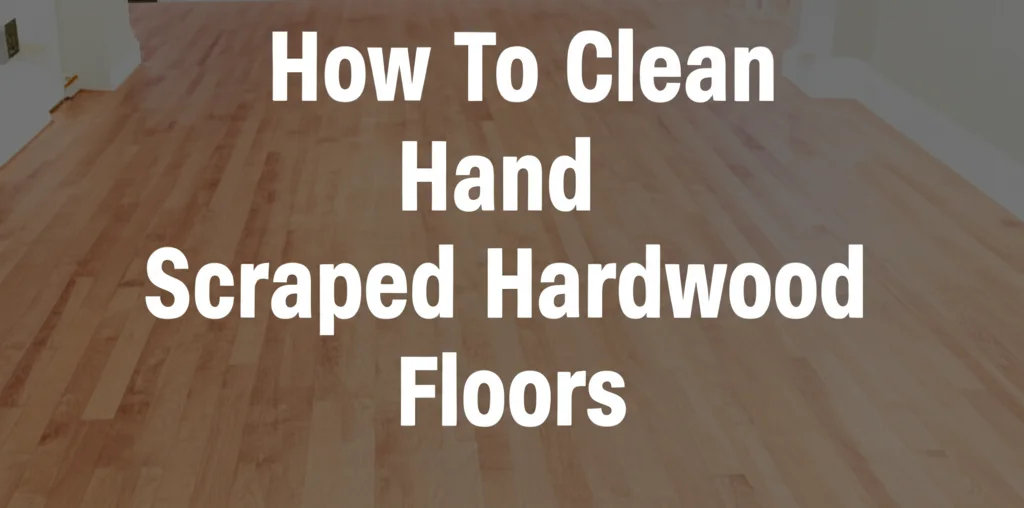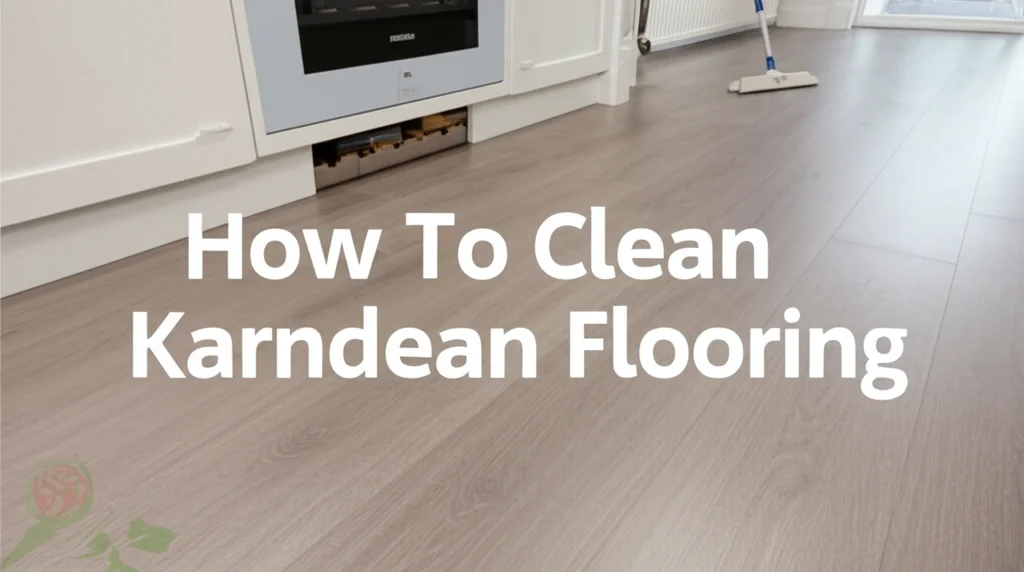· Flooring · 13 min read
How Do You Clean Engineered Hardwood Flooring
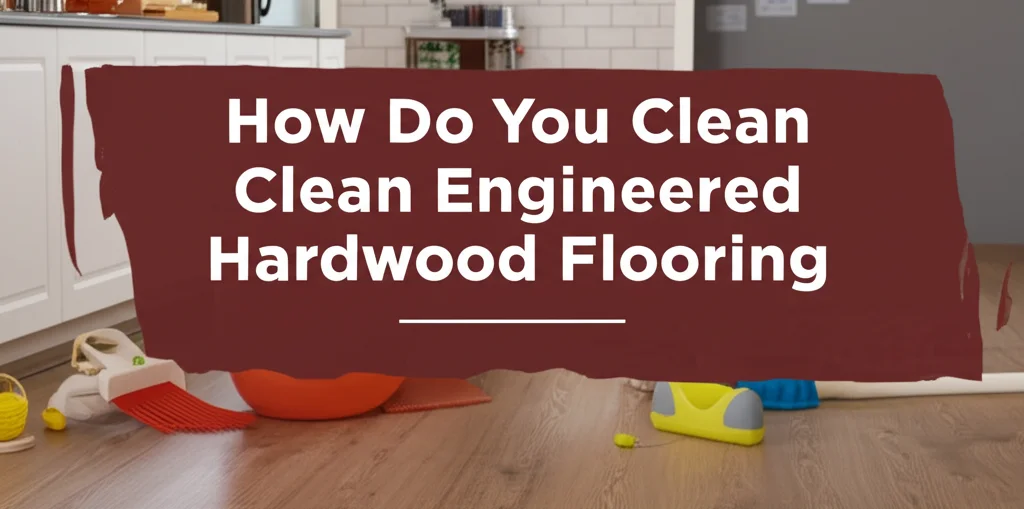
The Ultimate Guide to Cleaning Engineered Hardwood Floors
Quick Takeaways:
- Use pH-neutral cleaners specifically formulated for engineered hardwood
- Sweep or vacuum daily and mop weekly with minimal moisture
- Never use steam cleaners or excessive water on engineered floors
- Address spills immediately to prevent damage to the thin veneer layer
- Avoid vinegar, harsh chemicals, and abrasive tools that damage the finish
Cleaning engineered hardwood flooring requires gentle, consistent care to preserve its beauty and extend its lifespan. Use a microfiber dust mop daily, clean spills immediately, and use only pH-neutral cleaners designed specifically for engineered wood floors while avoiding excess moisture and steam cleaning.
Understanding Engineered Hardwood Flooring
Engineered hardwood flooring has surged in popularity due to its beautiful appearance and practical benefits. Unlike solid hardwood, engineered hardwood consists of several layers: a real hardwood veneer surface bonded to multiple plywood or high-density fiberboard (HDF) layers underneath. This construction makes engineered hardwood more stable and resistant to humidity and temperature changes than solid hardwood.
However, despite its durability, engineered hardwood floors still require proper care and maintenance. The thin veneer layer (typically 1/16” to 3/16” thick) can be damaged by harsh cleaning methods or inappropriate products. Understanding the unique properties of your engineered hardwood flooring is essential before developing a cleaning routine.
Most engineered hardwood floors come with a factory-applied finish, either aluminum oxide, acrylic, or urethane. This protective layer shields the wood from wear and tear but can deteriorate with improper cleaning. Using the right techniques and products will help maintain both the finish and the underlying wood veneer, ensuring your floors remain beautiful for years to come.
Before diving into specific cleaning methods, it’s worth noting that prevention is often the best approach. Using furniture pads, removing shoes indoors, and placing mats at entrances can significantly reduce the cleaning burden while protecting your investment.
Daily Cleaning Routine for Engineered Hardwood
Establishing a consistent daily cleaning routine is the foundation of maintaining pristine engineered hardwood floors. Regular maintenance prevents dirt and debris from scratching your floor’s surface and helps preserve its finish over time.
Sweeping and Dusting
The most important daily task is removing loose dirt, dust, and pet hair that can act like sandpaper when walked on. Use a soft-bristled broom or, preferably, a microfiber dust mop which is gentle on your floor’s finish while effectively capturing dust particles. Focus particularly on high-traffic areas and spaces near exterior doors where more debris tends to accumulate.
For corners and hard-to-reach areas, use a soft-bristled brush attachment rather than stiff brushes that might scratch the surface. Pay special attention to the spaces between boards where dust often collects.
Vacuuming Engineered Hardwood
When choosing to vacuum instead of sweep, select a vacuum designed for hardwood floors or use appropriate settings:
- Use a vacuum with a hard floor setting or turn off the beater bar/rotating brush
- Choose models with rubber wheels rather than plastic, which can scratch floors
- Consider vacuums with microfiber attachments specifically designed for hardwood
- Avoid vacuums that push debris around rather than collecting it
Some of the best vacuums for hardwood floors have specialized features like adjustable suction power and soft-bristled attachments that are gentle on engineered wood surfaces while still providing thorough cleaning.
Addressing Spills Immediately
Perhaps the most critical daily practice is attending to spills as soon as they occur. Engineered hardwood, while more moisture-resistant than solid hardwood, can still be damaged by standing liquids that seep into seams and edges.
For liquid spills:
- Blot (don’t wipe) with a clean, dry cloth to absorb moisture
- Avoid spreading the spill to a larger area
- For sticky spills, slightly dampen a cloth with water and gently clean the area
- Dry thoroughly with a fresh cloth immediately afterward
This immediate attention to spills prevents water damage and staining that might otherwise require more intensive restoration efforts later.
Weekly Deep Cleaning Methods
While daily maintenance prevents buildup, a more thorough weekly cleaning keeps your engineered hardwood floors looking their best. This deeper clean removes residues that daily dusting might miss while providing an opportunity to treat the wood properly.
Selecting the Best Mop for Engineered Hardwood
Choosing the right mop is crucial for effective yet gentle cleaning. The best mops for engineered hardwood floors include:
- Microfiber flat mops: These trap dirt effectively without scratching and can be used slightly damp
- Spray mops: Allow for controlled moisture application directly onto the mop pad rather than the floor
- Traditional string mops: Generally should be avoided as they typically use too much water
- Spin mops: Can work if thoroughly wrung out to be barely damp
When mopping engineered hardwood, remember that less is more when it comes to moisture. Your mop should be damp, not wet—if it leaves visible wetness that doesn’t dry within seconds, it’s too wet.
Best Cleaners for Engineered Wood Floors
Selecting an appropriate cleaner is just as important as your mopping technique:
- pH-neutral wood floor cleaners: Products specifically formulated for engineered hardwood provide effective cleaning without damaging the finish.
- Manufacturer-recommended products: Always check if your flooring manufacturer specifies certain cleaners to maintain warranty coverage.
- Bona Engineered Hardwood Floor Cleaner: A popular choice among professionals for its gentle yet effective formula.
- Diluted dish soap solution: In a pinch, add a few drops of mild dish soap to a gallon of water as an alternative.
Always test any new product in an inconspicuous area first to ensure it doesn’t damage the finish or discolor the wood.
For optimal results, apply cleaner to the mop rather than directly to the floor, work in small sections, and dry each section immediately with a clean microfiber cloth if any visible moisture remains. This technique prevents water from seeping into seams and potentially causing damage.
Natural Cleaning Solutions for Engineered Hardwood
Many homeowners prefer natural cleaning solutions for their engineered hardwood floors to avoid chemicals and create a healthier home environment. While some natural options are excellent, others should be approached with caution.
Is Vinegar Safe for Engineered Hardwood?
The question of how to clean engineered hardwood floors with vinegar is common, but the answer requires nuance. While diluted vinegar is sometimes suggested as a natural cleaner, it’s generally not recommended for engineered hardwood for several reasons:
- Vinegar is acidic (pH of about 2.5), which can gradually deteriorate the protective finish
- Repeated use can dull the floor’s appearance over time
- Some manufacturers explicitly state that using vinegar voids their warranty
If you do choose to use vinegar despite these cautions:
- Use a highly diluted solution (½ cup white vinegar to 1 gallon of warm water)
- Ensure your mop is barely damp, not wet
- Use this method sparingly, not as your regular cleaning solution
- Check your warranty before proceeding
Safe Natural Alternatives
Instead of vinegar, consider these safer natural cleaning options for engineered hardwood floors:
Plain water: For many routine cleanings, a well-wrung microfiber mop with just water is sufficient.
Tea cleaning solution: Brew black tea, let it cool, and use it for gentle cleaning that adds a subtle shine.
Plant-based commercial cleaners: Look for natural products specifically formulated for engineered wood floors.
Castile soap solution: Mix a few drops of castile soap with water for a gentle, effective cleaner.
When using any natural solution, remember that technique matters as much as the product. Always wring out your mop thoroughly, clean in the direction of the wood grain, and never leave standing water on the floor.
For stubborn spots without using harsh chemicals, create a paste of baking soda and water, gently rub the spot, and wipe clean with a barely damp cloth. This approach works well for removing difficult stains from engineered wood without damaging the finish.
What to Avoid When Cleaning Engineered Hardwood
Understanding what not to do is just as important as knowing the right cleaning methods for engineered hardwood floors. Avoiding these common mistakes will help preserve your floor’s beauty and extend its lifespan.
Steam Cleaning: A Definitive No
Can you steam clean engineered hardwood floors? The answer is a resounding no. Steam cleaners force hot water vapor into the wood, which can:
- Cause the veneer layer to delaminate from the core
- Promote warping and buckling
- Lead to irreversible water damage
- Void your manufacturer’s warranty
Even steam mops marketed as safe for hardwood typically introduce too much moisture and heat for engineered wood floors. The risk of serious damage far outweighs any potential cleaning benefit.
Harmful Cleaning Products
Several cleaning products and methods should be avoided entirely:
- Oil soaps: These leave residue that attracts dirt and can make floors slippery
- Wax-based cleaners: These create buildup that dulls finish and makes future refinishing difficult
- Ammonia or bleach: These harsh chemicals damage both the finish and the wood itself
- Abrasive cleaners: Powders or creams with grit will scratch and dull the floor’s surface
Also avoid furniture polish, orange oil, or any product not specifically designed for engineered wood floors. These can leave residue, create slipping hazards, or damage your floor’s protective finish.
Damaging Tools and Techniques
Your cleaning tools and methods can be just as harmful as the wrong products:
- Wet mops or soaking: Excess water can seep between boards and cause swelling
- Scrubbing brushes: Stiff bristles scratch the finish
- Abrasive scouring pads: These create fine scratches that dull the floor’s appearance
- Beater bar vacuums: The rotating brushes can scratch and damage the wood surface
Always opt for soft tools like microfiber cloths and pads that clean effectively without risking damage to your floor’s finish. Remember that engineered hardwood, while more stable than solid hardwood, still contains real wood that can be permanently damaged by improper care.
For deep cleaning, it’s better to use specialized products rather than aggressive techniques that might seem more effective but actually harm your floors.
Dealing with Stains and Damage
Even with meticulous care, engineered hardwood floors may occasionally develop stains or suffer damage. Addressing these issues promptly and appropriately can prevent them from becoming permanent problems.
Removing Common Stains
Different types of stains require specific approaches:
Water Stains/White Rings:
- For fresh water marks, dry thoroughly and they often disappear
- For persistent white rings, lightly rub with a cloth and a tiny amount of hardwood floor cleaner
- For stubborn water stains, try a microfiber cloth with a mixture of equal parts baking soda and toothpaste
Food and Drink Stains:
- Blot immediately with a clean cloth
- Clean with a damp microfiber cloth and appropriate wood floor cleaner
- For greasy stains, a small amount of dish soap diluted in water can help break down oils
Pet Stains:
- Blot liquid immediately
- Clean with enzyme-based pet stain removers designed for hardwood
- Stubborn odors may require specialized pet odor neutralizers safe for wood floors
Ink, Paint, and Marker:
- For fresh marks, blot (don’t rub) with a cloth dampened with isopropyl alcohol
- For dried paint, consult a flooring professional as removal might damage the finish
- Never use acetone or nail polish remover on engineered hardwood
Addressing Scratches and Scuffs
Minor scratches and scuffs can often be addressed without professional help:
- Minor surface scratches: Try commercial scratch concealers designed for wood floors
- Scuff marks: Often these can be removed by gently rubbing with a tennis ball or clean pencil eraser
- Deeper scratches: Fill-in repair kits matched to your floor color can help hide damage
For floors with significant damage or multiple problem areas, consider consulting with a professional who specializes in engineered hardwood floors. Some engineered products can be lightly sanded, depending on the thickness of the veneer layer.
Regular maintenance with appropriate cleaning techniques for hardwood floors is the best prevention against damage that requires more intensive repair efforts.
Maintaining Long-Term Beauty
Beyond regular cleaning, several practices can help maintain your engineered hardwood floors’ beauty and extend their lifespan significantly.
Preventative Measures
Preventing damage is always easier than repairing it:
- Use furniture pads under all legs to prevent scratches when items are moved
- Place entry mats at all exterior doors to capture dirt, moisture, and debris
- Consider a no-shoes policy or use only clean, non-marking indoor shoes
- Keep pet nails trimmed to prevent scratches from animal traffic
- Use protective mats under rolling chairs or in areas with heavy furniture
- Control indoor humidity levels between 35-55% to prevent wood expansion and contraction
Periodic Maintenance
Several periodic tasks complement your regular cleaning routine:
- Rotate rugs and furniture occasionally to ensure even wear and sun exposure
- Reapply floor polish (if recommended by your manufacturer) every 2-3 months
- Check for loose boards or other issues that might worsen with time
- Touch up minor damage promptly before it becomes more noticeable
- Schedule professional deep cleaning annually for heavily used areas
When to Consider Refinishing
Unlike solid hardwood, not all engineered floors can be sanded and refinished multiple times. The options depend on your floor’s veneer thickness:
- Thin veneer (1/16”): Typically cannot be sanded; consider recoating instead
- Medium veneer (2-3mm): May allow for light screening and recoating
- Thick veneer (3mm+): May permit one or two light sandings during its lifetime
Before attempting any refinishing, consult with a professional who specializes in engineered hardwood floors. Using improper techniques or sanding too deeply can permanently damage your floors by wearing through the veneer to the plywood beneath.
For floors showing significant wear but insufficient veneer for sanding, professional recoating services can often restore much of the original beauty without removing any wood.
FAQ: Common Questions About Engineered Hardwood Cleaning
What is the best way to clean engineered hardwood floors?
The best approach is daily dust mopping with a microfiber mop, followed by weekly cleaning with a pH-neutral cleaner specifically designed for engineered wood floors. Always use minimal moisture, clean up spills immediately, and avoid harsh chemicals or abrasive tools that can damage the floor’s finish.
Can you use a steam cleaner on engineered hardwood floors?
No, steam cleaners should never be used on engineered hardwood floors. The intense heat and moisture can cause irreversible damage including warping, delamination of the veneer layer, and deterioration of the adhesives holding the floor’s layers together. Steam cleaning will likely void your floor’s warranty as well.
How do you remove stains from engineered wood floors?
For most stains, clean promptly with a cloth dampened with an appropriate wood floor cleaner. For tougher stains, use products specifically designed for hardwood stain removal. Water stains often respond to a mixture of baking soda and toothpaste gently applied, while greasy stains may require a mild dish soap solution. Always test any solution in an inconspicuous area first.
Is it safe to clean engineered hardwood floors with vinegar?
While some people use diluted vinegar solutions, most manufacturers discourage this practice. Vinegar’s acidity can gradually deteriorate your floor’s protective finish and potentially void your warranty. If you choose to use vinegar despite these risks, use it very diluted (½ cup per gallon of water) and only occasionally.
How often should engineered hardwood floors be cleaned?
Dust mopping should be done daily in high-traffic areas, with a more thorough cleaning using an appropriate wood floor cleaner once weekly. Address spills immediately when they occur. A deep cleaning with a professional hardwood floor cleaning product can be performed monthly for heavily used spaces.
Can you mop engineered hardwood floors?
Yes, but only with a well-wrung, barely damp mop (preferably microfiber) and an appropriate cleaner. Never use a soaking wet mop or leave standing water on engineered hardwood floors, as excess moisture can damage both the finish and the wood itself, potentially causing warping or discoloration.
Conclusion: Keeping Your Engineered Hardwood Floors Beautiful
Maintaining beautiful engineered hardwood flooring doesn’t require complicated procedures, but it does demand consistency and the right approach. By implementing the cleaning methods outlined in this guide, you’ll help ensure your floors remain stunning for years to come.
Remember that engineered hardwood combines the beauty of real wood with modern engineering, but the thin veneer layer requires proper care to maximize its lifespan. Daily dust removal, prompt attention to spills, weekly cleaning with appropriate products, and preventative measures form the foundation of effective engineered hardwood floor maintenance.
Avoid common mistakes like steam cleaning, using harsh chemicals, or applying excessive moisture. Instead, focus on gentle, regular care that preserves the wood’s natural beauty while protecting its finish. When in doubt about a particular product or cleaning method, consult your flooring manufacturer’s recommendations or speak with a flooring professional.
With proper care, your engineered hardwood floors will continue to be a beautiful, valuable feature of your home for many years, providing warmth, elegance, and durability that few other flooring options can match. The time invested in proper cleaning and maintenance will pay dividends in extended floor life and preserved beauty.
- engineered hardwood
- hardwood floor cleaning
- floor care

